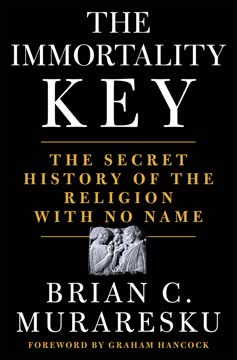Key Takeaways
1. Ancient Mysteries Promised Immortality Through Experience
Aristotle once said the initiates came to Eleusis not to learn something, but to experience something.
Eleusis, the spiritual capital. For two thousand years, the Greek sanctuary of Eleusis drew pilgrims seeking life beyond the grave. Unlike traditional worship, the Eleusinian Mysteries offered a direct, transformative experience, promising initiates they would "never die." This profound encounter, shrouded in secrecy under penalty of death, was the core of Western civilization's first major spiritual tradition.
A promise of immortality. Prominent figures like Plato, Pindar, and Sophocles attested to the Mysteries' power, claiming the ritual banished the fear of death and revealed a blessed afterlife. This "beatific vision" was the ultimate goal, achieved after a long initiation culminating in the consumption of a sacred beverage called the kukeon and a night of spectacles in the temple.
The enduring riddle. Despite its immense influence and longevity (from 1500 BC to AD 392), the precise nature of the Eleusinian experience remains history's "best-kept secret." The strict code of silence and the destruction of the site by early Christians left only tantalizing clues about the kukeon and the vision it induced.
2. A Psychedelic Hypothesis Challenged Classical Scholarship
“The Greeks just wouldn’t have done that sort of thing.”
A radical theory emerges. In 1978, ethnomycologist R. Gordon Wasson, chemist Albert Hofmann (discoverer of LSD), and classicist Carl Ruck proposed that the kukeon was a psychedelic brew, likely containing ergot alkaloids derived from barley. This theory suggested the Eleusinian vision was chemically induced, linking ancient Greek religion to mind-altering substances.
Academic and cultural backlash. The hypothesis was met with scorn, dismissed as "perverse" and "unconvincing." In the context of the burgeoning War on Drugs, the idea that the founders of Western civilization used psychedelics was deeply unpopular and seen as a threat to established norms and the perceived rationality of the Greeks.
A scholar's exile. Carl Ruck, the only academic in the trio, paid a heavy price for his association with the controversial theory. He was marginalized within his field, denied opportunities, and largely ignored, demonstrating the powerful resistance to reinterpreting classical history through the lens of psychoactive substances.
3. Prehistoric Brews Hint at Ancient Ritual Intoxication
“In fact, I think they used drugs. Because they wanted to have, eh … how do you say, illusions.”
Drugs were "natural" in antiquity. Despite modern skepticism, ancient sources and archaeological finds suggest a long history of ritual drug use. The Pythia at Delphi may have used ethylene gas or plants like laurel or henbane for her prophecies, and the Homeric epics mention witches like Circe using potent "pharmaka" (drugs) in their potions.
Beer predates bread? The "Beer Revolution" hypothesis suggests that the desire for fermented beverages, not just food, drove the transition from hunting/gathering to agriculture around 10,200 BC. Recent finds support this:
- 13,000-year-old stone mortars at Raqefet Cave, Israel, show evidence of beer brewing in a burial context.
- Göbekli Tepe in Turkey (12,000 years old) features massive stone basins potentially used for large-scale ritual feasting with beer.
Graveyard beer and the afterlife. These early brews appear linked to death cults and ancestor veneration, suggesting a ritual purpose beyond simple intoxication. This tradition of using fermented drinks to commune with the dead may stretch back to the Stone Age, predating the Eleusinian Mysteries by thousands of years.
4. Hard Evidence Links Greek Colonies to Psychedelic Potions
“We should have no trouble with that,” Ruck responds. “It’s time that we acknowledge our heritage.”
The search for the kukeon. With no testable vessels from Eleusis itself, the hunt for a psychedelic kukeon turned to Greek colonies. The Phocaeans, "Vikings of Antiquity" from Anatolia, established settlements across the Mediterranean, including Emporion in Spain, bringing their cults and practices with them.
Mas Castellar de Pontós. Excavations at this Greek farm in Catalonia revealed a "domestic chapel" with evidence of an agrarian cult linked to Demeter and Persephone. Finds included:
- Subterranean grain silos used as sacred chambers.
- Terra-cotta figures of Demeter/Persephone and their missionary Triptolemus.
- Ritual dog sacrifices and funerary banquets.
The smoking gun. A miniature Greek chalice from the chapel tested positive for ergot, the same fungus Ruck hypothesized was in the Eleusinian kukeon. This 2,200-year-old find, along with other nightshade-infused beers in ancient Iberia, provides the first direct evidence of a psychedelic potion used in a Greek-influenced ritual setting, supporting the idea that the Eleusinian sacrament was indeed drugged.
5. Ancient Greek Wine Was a Potent, Drugged Elixir
“It looks like a morel or some kind of mushroom.”
Wine as pharmakon. Ancient Greek literature consistently describes wine as a powerful "pharmakon" (drug), capable of inducing states ranging from healing to madness to death. Unlike modern wine, it was often mixed with various plant additives.
Visual clues on pottery. Red-figure vases like G 408 and G 409 in the Louvre depict Dionysian wine-mixing rituals, showing maenads adding mysterious ingredients to kraters. While damaged, one vase hints at a mushroom or herb being added, suggesting the visual representation of a drugged potion.
Dioscorides' recipes. The first-century pharmacologist Dioscorides documented numerous "wine formulas" in his Materia Medica, detailing how to mix wine with potent and often psychoactive plants like henbane, mandrake, and black nightshade, which he noted produced "not unpleasant visions." This confirms a widespread knowledge of drugging wine in the Greek world.
6. The Gospel of John Cast Jesus as a Dionysian Wine God
“You know … we call the Eucharist the pharmakon athanasias,” he beams, using the Ancient Greek phrase for the “Drug of Immortality.”
Dionysian parallels in John. The Gospel of John uses specific Greek language and imagery to link Jesus to Dionysus, the God of Ecstasy. Examples include:
- Jesus's first miracle: turning water into wine at Cana, Dionysus's "signature miracle."
- Jesus as the "True Vine," a direct symbol of Dionysus.
- Jesus as the "only begotten" Son of God, echoing Dionysus's unique birth.
- Jesus's crown of thorns and purple cloak, symbols of Dionysus.
The Eucharist as apotheosis. John's Gospel presents the Eucharist as a means of achieving immortality and becoming one with God, using language ("gnawing" flesh, "True Drink") that mirrors Dionysian rituals of consuming the god's flesh and blood (omophagon charin). This suggests the Christian sacrament was understood as a "Drug of Immortality" (pharmakon athanasias), a concept explicitly used by early Christian writers like Ignatius of Antioch.
A deliberate strategy. By portraying Jesus as the new Dionysus and his Eucharist as a potent pharmakon, John's Gospel appealed to Greek-speaking pagans familiar with the Mysteries, offering Christianity as a continuation and culmination of their own spiritual traditions.
7. Early Christian Eucharist May Have Been a Psychedelic Sacrament
“That’s why … a considerable number of you are dying.”
A different kind of Eucharist. Early Christian communal meals, known as agape or "love feasts," were sometimes marked by excessive drinking. Saint Paul's First Letter to the Corinthians suggests these gatherings could be chaotic, with some getting drunk.
Lethal wine in Corinth? Paul's stark warning in 1 Corinthians 11:30 that "a considerable number" of Corinthians were "dying" from partaking in the Eucharist unworthily suggests the sacrament was more than symbolic. The Greek word used for "dying" (koimontai) is unambiguous, implying the consumption of a potent, potentially lethal substance.
Blending pagan and Christian rites. In Rome, the pagan refrigerium (funerary banquet) tradition, where wine was essential for communing with the dead, merged with the Christian Eucharist. These "chill-outs" in catacombs and cemeteries, sometimes lasting all night, were seen as ways to nourish the deceased and gain access to the afterlife.
Evidence in the catacombs. Frescoes in Roman catacombs like the Hypogeum of the Aurelii depict funerary banquets that resemble the Last Supper, featuring a raised chalice and twelve figures. The presence of pagan motifs like Circe and Dionysian initiation scenes alongside Christian symbols suggests a syncretic period where the Roman cult of the dead and the Christian Eucharist overlapped, potentially involving a shared tradition of potent, perhaps drugged, wine.
8. Women Led Underground Rituals Blending Pagan and Christian Rites
“Whenever Christianity spread,” says the scholar Torjesen, “women were leaders of house churches.”
Women's central role. In ancient mystery cults like those of Demeter and Dionysus, women often held prominent leadership positions and were key to preparing sacred sacraments. This tradition continued in early Christianity, where women like Lydia, Priscilla, and Junia led house churches and played vital roles in the community.
Keepers of the sacrament. Women were traditionally responsible for domestic tasks, including preparing food and beverages. In the context of house churches and catacomb refrigeria, this placed women in charge of the Eucharist, the central ritual meal.
Evidence in Roman catacombs. Frescoes in the Catacombs of Priscilla and Saints Marcellinus and Peter depict women presiding over funerary banquets, raising the Eucharistic cup and directing the mixing of wine. Latin inscriptions like "Misce!" (Mix it up!) and "Da calda!" (Hand over the warm stuff!) suggest women were actively involved in preparing a special, possibly heated or infused, wine for these rituals.
A challenge to patriarchy. The prominence of women in early Christian rituals, particularly their handling of the Eucharist, challenged the patriarchal norms of both Roman society and the emerging male-dominated Church hierarchy. This may have contributed to the later suppression of women's roles.
9. Gnostic Christians Practiced a Visionary, Female-Led Eucharist
“Without visions and revelations, then, the Christian movement would not have begun.”
Gnosis and direct experience. Gnostic Christians sought direct, intuitive knowledge (gnosis) of God, believing the divine spark resided within. They emphasized personal mystical experience over dogma and hierarchy, a perspective that resonated with ancient mystery cults.
Gospel of John and Gnosticism. The Gospel of John, with its emphasis on Jesus as the "True Vine" and the Eucharist as a means of achieving immortality, was particularly favored by Gnostics. They interpreted its "secret symbols and language" as pointing to a hidden doctrine of spiritual transformation.
Female Gnostic leaders. Gnostic texts like the Gospel of Mary Magdalene portray women as key disciples and visionaries, entrusted with secret teachings. Figures like Simon Magus's partner Helena and Valentinus's student Marcus were associated with Gnostic groups in Rome that practiced alternative, often female-led, Eucharists.
A drugged Eucharist? Church Fathers like Irenaeus and Hippolytus accused Gnostic groups like the Marcosians of using "love charms" and "drugs" in their rituals, specifically mentioning women mixing a potent, possibly psychedelic, wine that induced "frenzy" and "ecstasy." This suggests a Gnostic Eucharist may have involved psychoactive substances to facilitate visionary experiences.
10. The Inquisition Targeted Witches for Their Heretical Sacraments
“Although they pretended to be good Catholic Christians,” writes historian Karen Jolly about the many women who attended the Sabbat, “they represented the most dangerous of all enemies of the human race and the Christian Church.”
Survival of alternative practices. Despite the suppression of Gnosticism and the marginalization of women in the mainstream Church, traditions of folk healing, ritual intoxication, and alternative Eucharists persisted, particularly in rural areas and among women.
The Sabbat and its Eucharist. Medieval and Renaissance accounts describe the witches' Sabbat as an alternative Mass, often involving a "wine" or potion mixed with psychoactive ingredients like those found in the witches' ointment (henbane, nightshade, mandrake). Some accounts mention a "toad Eucharist" with potentially psychedelic bufotenine.
Witchcraft as heresy. The Church, particularly through the Inquisition, began to view these practices not just as pagan superstition but as a direct blasphemy of the Christian Eucharist and a pact with the Devil. This elevated witchcraft to a major heresy, justifying brutal persecution.
Targeting women and knowledge. The Inquisition's focus on prosecuting women, often mothers and daughters, suggests an attempt to eradicate a lineage of knowledge about plants, herbs, and potions that had been passed down through generations, potentially including recipes for alternative sacraments.
11. A Renaissance Magus Hinted at a Surviving Psychedelic Tradition
“For a time it was like seeing so many frenzied Bacchanals (tanti furiosi debaccanti), inebriated with that which they saw so plainly.”
Bruno's heretical vision. Giordano Bruno, a Renaissance philosopher from Campania, was burned at the stake for his radical ideas, including a cosmology of infinite worlds and a critique of the Church. His work hinted at a revival of ancient Greek magic and philosophy.
Circe and the beatific vision. In his writings, Bruno used the figure of the Greek witch Circe and her "drugs" (veneficii) as an allegory for achieving the beatific vision, the ultimate mystical experience. He described the resulting state as being "inebriated" like "frenzied Bacchanals," linking his pursuit of enlightenment to Dionysian practices.
Campania's mystical legacy. Bruno's hometown in Campania was part of a region with deep roots in Greek mysticism, home to figures like Pythagoras, Parmenides, and Plotinus, who practiced techniques for dying before dying. This region also had a long history of Dionysian cults and, as suggested by the Villa Vesuvio find, potent, possibly drugged, wine.
Inquisition records. Bruno's trial records, partially preserved in the Vatican archives, show the Inquisition was concerned with his views on the Eucharist. While not explicitly mentioning drugs, his association of mystical vision with ancient Greek "drugs" and his critique of the Christian sacrament suggest he may have been privy to a surviving tradition of alternative, perhaps psychedelic, Eucharists.
12. Modern Science Resurrects the Ancient Beatific Vision
We have tasted of God and our eyes have been opened.
The psychedelic renaissance. Modern research into psilocybin and other psychedelics is revealing their capacity to reliably induce profound mystical experiences, often described as the most meaningful events in a person's life. These experiences closely resemble the "beatific vision" sought in ancient mysteries and by mystics across religions.
Safety, reliability, scalability. Unlike ancient methods, modern science offers controlled, safe, and potentially scalable ways to access these states of consciousness. This addresses the historical limitations that prevented ancient mystical traditions from becoming widespread.
Healing modern crises. Researchers like those at Johns Hopkins suggest these experiences can alleviate anxiety, depression, and fear of death, and may foster increased empathy, connection to nature, and pro-social behavior. This aligns with the ancient idea that such experiences could "hold the entire human race together."
A new Reformation. The potential for widespread access to reliable mystical experiences through regulated psychedelic therapy could lead to a "revival of religion" focused on direct experience rather than dogma. This echoes the ancient religion with no name, which prioritized personal encounter with the divine.
The future of the Eucharist. If the original Christian Eucharist was indeed a psychedelic sacrament, its modern scientific resurrection offers a path to reconnecting with the mystical core of the faith and addressing the spiritual alienation of the modern world.
Last updated:
FAQ
What is The Immortality Key by Brian C. Muraresku about?
- Secret history of religion: The book explores the hidden role of psychedelic substances in ancient Greek Mysteries and early Christianity, arguing that visionary drugs were central to spiritual experiences and the promise of immortality.
- Interdisciplinary investigation: Muraresku combines archaeology, classical literature, archaeochemistry, and religious studies to uncover evidence of hallucinogenic beer and wine used in ancient rituals.
- Focus on women and mystics: The narrative highlights the critical role of Greek-speaking women with pharmacological expertise who preserved and transmitted these secret sacramental traditions, often facing persecution.
Why should I read The Immortality Key by Brian C. Muraresku?
- Reveals hidden religious history: The book uncovers a long-suppressed tradition of psychedelic use in ancient religious rites, challenging conventional views of Christianity’s origins and Western spirituality.
- Bridges science and spirituality: It presents scientific evidence from archaeobotany and chemistry alongside historical and theological analysis, appealing to readers interested in the intersection of religion, history, and psychedelics.
- Engaging investigative narrative: Muraresku’s journey through archaeological sites, Vatican archives, and interviews with scholars makes complex topics accessible and compelling.
What are the key takeaways from The Immortality Key by Brian C. Muraresku?
- Psychedelic sacraments were real: Archaeobotanical and chemical evidence confirms that ancient religious rituals involved mind-altering substances, such as ergot-infused beer and drugged wine.
- Women as spiritual leaders: Greek-speaking women with pharmacological knowledge were central to preserving and administering these sacraments, often facing persecution during the Inquisition and witch hunts.
- Suppression by religious authorities: The Catholic Church systematically suppressed these practices, replacing them with a symbolic Eucharist and persecuting those who maintained the original traditions.
- Modern revival: Contemporary psychedelic research is rediscovering the therapeutic and spiritual potential of these substances, potentially heralding a new era of mystical experience.
How does Brian C. Muraresku use scientific and archaeological evidence in The Immortality Key?
- Archaeochemical breakthroughs: Techniques like gas chromatography-mass spectrometry are used to detect ancient organic residues, identifying psychoactive compounds in ritual vessels.
- Archaeobotanical discoveries: Finds such as ergot-infused beer at Mas Castellar de Pontós and the psychedelic wine at Villa Vesuvio provide physical evidence of mind-altering substances in ancient rituals.
- Textual and artistic analysis: Ancient literature, hymns, and iconography are examined for coded references to psychedelic ingredients and visionary experiences, corroborated by modern scientific analysis.
What is the significance of the Eleusinian Mysteries in The Immortality Key by Brian C. Muraresku?
- Spiritual capital of Greece: Eleusis hosted the longest-running and most prominent mystery religion, promising initiates a vision that abolished fear of death and granted immortality.
- Secret psychedelic sacrament: The Mysteries involved a secret potion, the kukeon, likely containing ergot fungus, which induced powerful visionary experiences central to the rite.
- Suppression by Christianity: The Mysteries were outlawed in the fourth century AD by Christian emperors, marking the start of a spiritual identity crisis between Greek paganism and Christianity.
How does The Immortality Key by Brian C. Muraresku connect ancient Greek Mysteries to early Christianity?
- Inherited sacramental tradition: The book argues that early Greek-speaking Christians adopted a psychedelic Eucharist, using bread and wine infused with visionary plants and fungi to induce mystical experiences.
- Dionysian and Christian parallels: The Gospel of John and other early Christian texts use language and symbolism echoing Dionysian cult imagery, suggesting a continuity of psychedelic ritual.
- Suppression and transformation: With the rise of Roman Catholicism, psychedelic elements were removed from Communion, reducing it to a symbolic ritual devoid of experiential content.
What is the "pharmakon athanasias" or "Drug of Immortality" in The Immortality Key by Brian C. Muraresku?
- Ancient term for Eucharist: The phrase, found in a letter by Ignatius of Antioch, refers to the Christian Eucharist as a drug or remedy capable of granting eternal life.
- Connection to Greek sacramental wine: The book argues that this concept derives from the Greek understanding of wine as a pharmakon—both a medicine and a poison—that could induce mystical experiences and immortality.
- Symbol of pagan-Christian continuity: The pharmakon athanasias embodies the chemical and spiritual link between the Dionysian Mysteries and early Christian rituals.
What role did women play in the history described in The Immortality Key by Brian C. Muraresku?
- Priestesses and ritual leaders: Women were the primary officiants preparing and dispensing the psychedelic sacrament in Eleusis and other mystery cults.
- Early Christian leadership: Secret Christian ceremonies involving psychedelic Communion were often led by women, a role later marginalized by the male-dominated Church.
- Suppression and witch hunts: The marginalization of women and the eradication of their spiritual roles contributed to the loss of the original psychedelic sacrament and the rise of witch persecutions.
What is the significance of the archaeological finds at Mas Castellar de Pontós and Villa Vesuvio in The Immortality Key?
- Earliest scientific evidence: The discovery of ergotized beer at Mas Castellar de Pontós represents the earliest scientific data for ritual use of psychedelic drugs in classical antiquity.
- Psychedelic wine at Villa Vesuvio: Excavations uncovered a wine mixture containing opium, cannabis, henbane, nightshade, and lizard bones, suggesting a drugged sacrament used in ancient rituals.
- Support for sacramental hypothesis: These finds provide hard data that psychedelic sacraments existed in the earliest days of Christianity and Greek Mysteries, challenging the notion of a purely symbolic Eucharist.
How does The Immortality Key by Brian C. Muraresku explain the Church’s persecution of witches and herbalists?
- Threat to religious monopoly: Women who brewed and administered psychedelic sacraments posed a direct challenge to the Church’s control over spiritual authority and the Eucharist.
- Witches’ ointment and potions: Herbal mixtures containing nightshades, mandrake, and lizards were used in witchcraft, linked to visionary experiences and the beatific vision.
- Inquisition and witch hunts: The persecution was a calculated campaign to suppress a competing sacramental tradition that offered genuine mystical experiences.
What is the "Gospel of Infinity" and its relevance in The Immortality Key by Brian C. Muraresku?
- Giordano Bruno’s heresy: The "Gospel of Infinity" refers to Bruno’s cosmological vision of multiple worlds and infinite universes, which challenged Church doctrine and contributed to his execution.
- Connection to psychedelic Eucharist: Bruno’s writings allegorically describe a drugged sacrament involving Circe’s “plants” and “charms” that induce a beatific vision, linking him to the ancient mystery traditions.
- Symbol of resistance: Bruno represents the continuity of the secret chain of heretics who preserved the psychedelic sacrament against institutional suppression.
How does The Immortality Key by Brian C. Muraresku relate modern psychedelic research to ancient practices?
- Therapeutic parallels: The book highlights recent clinical studies at Johns Hopkins and NYU showing psilocybin’s ability to relieve end-of-life anxiety and induce mystical experiences similar to those described by ancient initiates.
- Potential for spiritual revival: Muraresku and others see modern psychedelics as catalysts for a new Reformation, reconnecting people with direct spiritual experience beyond dogma.
- Call for openness: The author advocates for archaeological testing of ancient Christian vessels to confirm the psychedelic origins of the Eucharist, which could transform contemporary understanding of faith.
Review Summary
The Immortality Key receives mixed reviews. Praised for its fascinating exploration of psychedelics in ancient religious practices, particularly early Christianity, and well-researched historical connections. Critics argue it lacks solid evidence, makes unsubstantiated leaps, and contains too much personal narrative. Some find the theories compelling, while others see confirmation bias. Readers appreciate the author's dedication and the book's thought-provoking nature, but many question the validity of its bold claims. Overall, it sparks interest in the origins of religious rituals and the potential role of psychoactive substances in spiritual experiences.
Similar Books
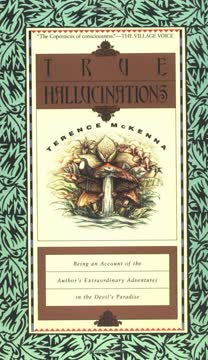
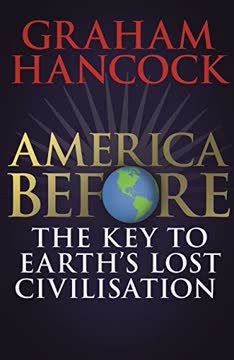
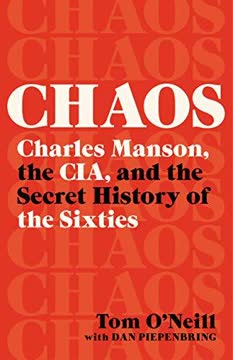
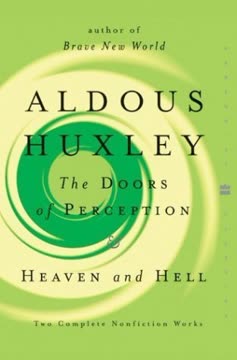
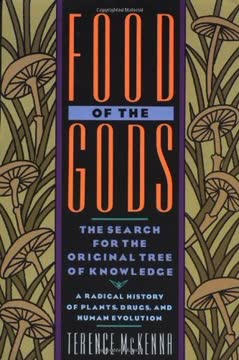
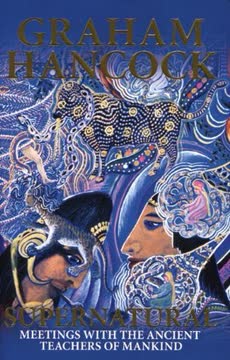
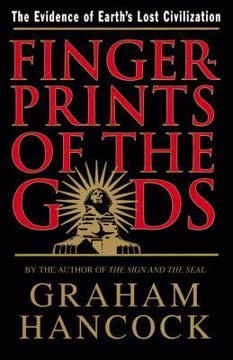
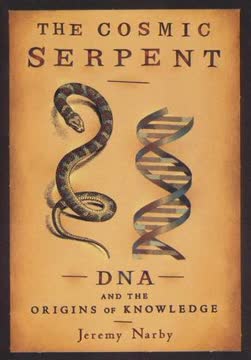
Download PDF
Download EPUB
.epub digital book format is ideal for reading ebooks on phones, tablets, and e-readers.
